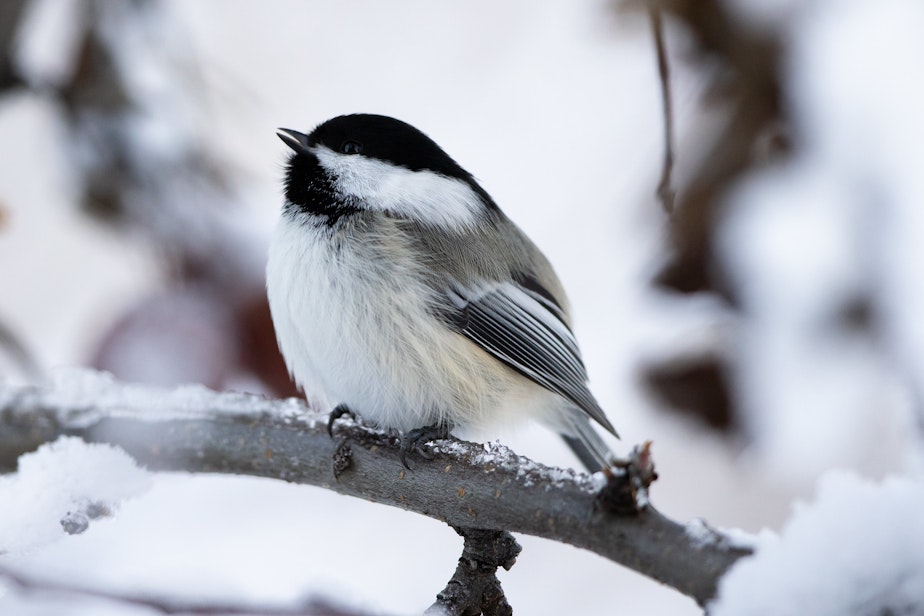This bird’s brain grows in winter to remember where it stashed its food

Spring doesn’t officially start until March 20, but signs of spring are everywhere in the Northwest. Flowers are popping and birds are singing their hearts out.
Some songbirds are just returning from the south, while others have managed to survive the dark and cold of winter in place.
One of the tiniest songbirds, a black-capped chickadee weighs about as much as a AAA battery.
For a creature that small, it’s no small task to stay warm all winter, especially in the snowier parts of the Northwest.
Chickadees grow an extra thousand feathers and fluff them up with air for a thicker winter coat. The little black-and-white birds will shiver to generate heat.
They can also lower their body temperature up to 20 degrees and go into an energy-saving torpor, or semi-hibernation.
At night, they’ll crowd together into tree cavities with their peers for slumber parties warmed by shared body heat.
Sponsored
But they still need lots of fuel to generate body heat — up to 20 times more food each day than in the summer.
A chickadee will stash food in thousands of hiding spots in the fall. The trick is remembering where they put all that food.
Each winter, the hippocampus, the part of the chickadee’s raspberry-sized brain that remembers locations, grows by 30 percent.
In the toughest of times, memory means survival.
Then in the spring, the chickadees let their bird brains shrink back down to regular size once the livin’ is easy.
Sponsored
Some chickadees also get year-round nutritional supplements at bird feeders.
This winter, West Coast wildlife officials have urged bird lovers to take down their feeders until an outbreak of salmonella in wild flocks has passed.
A cyclical population explosion of birds known as pine siskins has fostered the spread of the avian disease.
A shortage of conifer seeds in the Canadian forests where most siskins normally spend their winters has driven them south in search of food in what Audubon magazine calls “mind-boggling numbers.”
This year, bird feeders in the western U.S. are the avian equivalent of a crowded restaurant in a pandemic, where a deadly disease can easily spread.
Sponsored
The Washington Department of Fish and Wildlife advises not putting backyard bird feeders back up until April.




